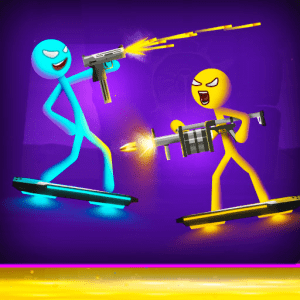Artificial intelligence (AI) has made remarkable progress in the field of image generation in recent years. Image generation is the task of creating realistic and diverse images from text descriptions, sketches, or other inputs. Image generation has many potential applications, such as enhancing creativity, designing products, creating art, and more.
One of the most impressive examples of image generation is DALLE, a deep learning model developed by OpenAI that can generate high-quality images from any text prompt. DALLE stands for Discrete Autoregressive Language and Latent Cross-Attention Estimator.
It is a combination of two powerful techniques: a transformer-based language model that can generate natural language from any input, and a variational autoencoder (VAE) that can compress images into discrete latent codes that can be fed into the language model.
DALLE was trained on a large-scale dataset of text-image pairs, called ImageNet-Text. It learned to associate words with visual concepts and to generate images that match the text description. DALLE can generate images of anything that can be described in natural language, such as animals, landscapes, objects, scenes, and even abstract concepts. DALLE can also generate images from multiple modalities, such as sketches, emojis, or captions.
DALLE is not perfect, however. It still has some limitations and challenges that need to be addressed. For example, DALLE sometimes generates images that are blurry, distorted, or inconsistent with the text prompt. DALLE also struggles with generating images that require fine-grained details or complex compositions. Moreover, DALLE is computationally expensive and requires a lot of data and resources to train and run.
This is where DALLE-2 comes in. DALL·E 2 is a follow-up to DALL·E, which was introduced in January 2021. DALL·E was an AI system that could create images from text descriptions, using a large neural network trained on a massive dataset of text and images. DALL·E could combine concepts, attributes, and styles in surprising and creative ways, generating images that were often humorous, surreal, or impressive.
DALL·E 2 takes this idea to the next level, by generating more realistic and accurate images with four times greater resolution. DALL·E 2 can also perform more advanced tasks, such as outpainting, inpainting, and variations. Outpainting is the ability to expand images beyond what's in the original canvas, creating expansive new compositions.
Inpainting is the ability to make realistic edits to existing images from a natural language caption, adding or removing elements while taking shadows, reflections, and textures into account. Variations is the ability to take an image and create different variations of it inspired by the original.
How does DALL·E 2 work?
DALL·E 2 uses a process called "diffusion", which starts with a pattern of random dots and gradually alters that pattern towards an image when it recognizes specific aspects of that image. DALL·E 2 has learned the relationship between images and the text used to describe them from a large dataset of text and images, similar to DALL·E.
However, DALL·E 2 uses a more powerful neural network architecture called GPT-4, which has more parameters and can process longer sequences of data. GPT-4 is also the basis for another OpenAI product called Codex, which can generate code from natural language.
DALL·E 2 is not only a fun and creative tool, but also a valuable research project that helps us understand how advanced AI systems see and understand our world. DALL·E 2 also raises important questions about the ethical and social implications of AI, such as how to prevent harmful or inappropriate generations, how to curb misuse or abuse of the technology, and how to ensure fairness and diversity in the representations.
OpenAI has taken several steps to address these issues, such as removing explicit content from the training data, preventing photorealistic generations of real individuals' faces, implementing a content policy and monitoring systems, and deploying DALL·E 2 in phases based on learning from real-world use.
How to use DALL-E 2?
DALL·E 2 is currently available in beta for anyone who wants to try it out. You can sign up on OpenAI's
website and explore DALL·E 2's capabilities with your own text descriptions or image uploads. You can also follow OpenAI on Instagram to see some of the amazing images that DALL·E 2 has generated. If you're interested in learning more about the technical details behind DALL·E 2, you can read the research paper or watch the video explanation on OpenAI's blog.
DALL·E 2 is an exciting example of how AI can empower people to express themselves creatively and expand their imagination. It also shows how AI can help us learn more about ourselves and our world. As OpenAI's mission states:
Our vision is to ensure that artificial general intelligence (AGI)—by which we mean highly autonomous systems that outperform humans at most economically valuable work—benefits all of humanity, and avoids enabling the creation of AI systems that harm humanity.
DALL·E 2 is a 12-billion parameter version of GPT-3, a powerful language model that can generate text for a wide range of tasks. DALL·E 2 is trained to generate images from text descriptions, using a dataset of text–image pairs. It can combine concepts, attributes, and styles in novel and surprising ways, as well as render text, apply transformations, and inpaint or outpaint existing images.
To use DALL·E 2, you simply need to provide a text prompt and wait for a few seconds. The system will generate four image variations based on your prompt, which you can download, share, or save as favorites. You can also edit the prompt or view more images if you are not satisfied with the results. DALL·E 2 is now available in public beta for anyone to try.
Here are some examples of DALL·E 2's image generation:
An illustration of a sun throwing water on fire.
This prompt shows how DALL·E 2 can create realistic images of objects that do not exist in reality. The result can be used for kids entertainment.
A dog with rabbit ears and cat paws.
This prompt shows how DALL·E 2 can create hybrid versions of animals and objects, as well as mix different categories and styles. The result is a cute and whimsical image that could be used for children's books, cartoons, or stickers.
These are just some of the many examples of DALL·E 2's image generation capabilities. You can try it yourself by visiting
https://openai.com/product/dall-e-2/ and entering any text prompt you can think of. You might be surprised by what DALL·E 2 can create for you.













No comments: